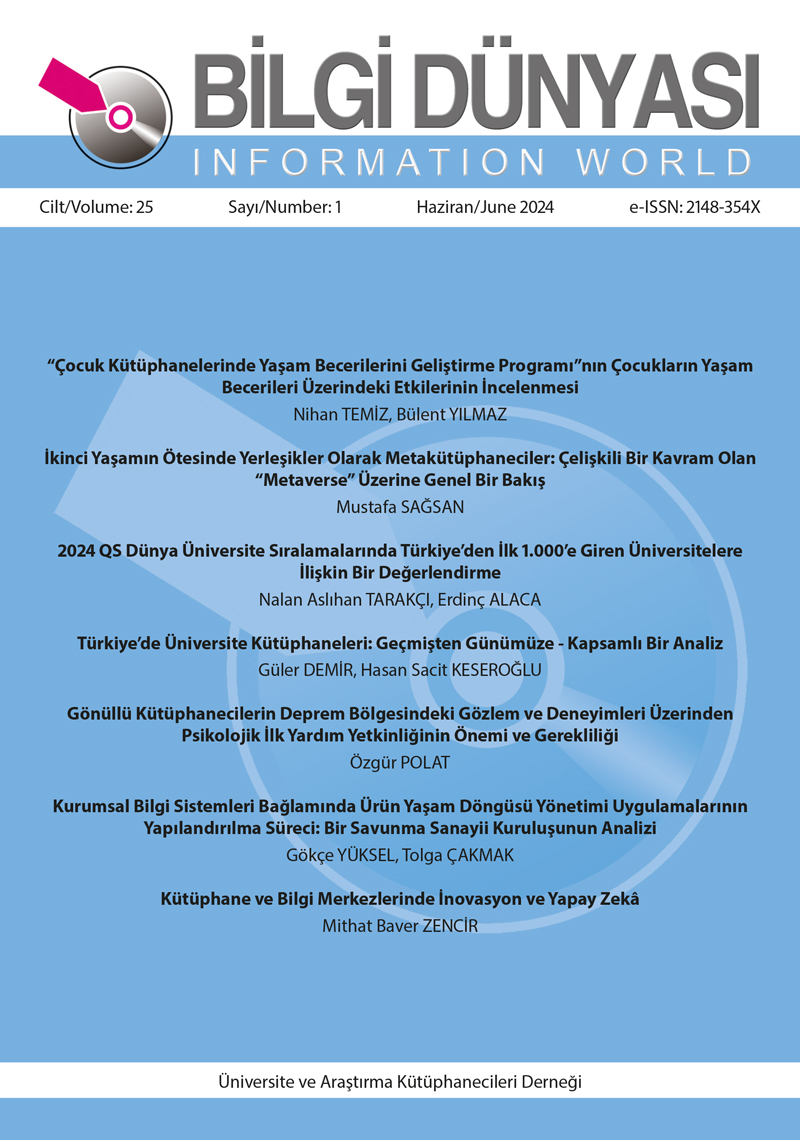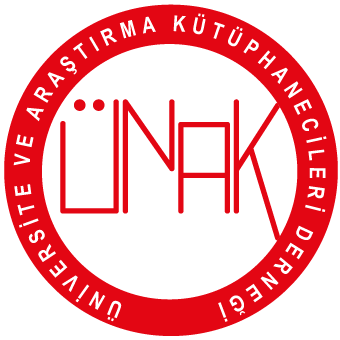İkinci Yaşamın Ötesinde Yerleşikler Olarak Metakütüphaneciler: Çelişkili Bir Kavram Olan “Metaverse” Üzerine Genel Bir Bakış
DOI:
https://doi.org/10.15612/BD.2024.736Anahtar Kelimeler:
Metakütüphaneci, metaverse, artırılmış gerçeklik, sanal gerçeklik, ikinci hayat, meta okuryazarlık, metamodernizmÖzet
Bu makalenin amacı, metaverse’in kütüphaneler ve kütüphaneciler açısından rolünü anlamaktır. Sanal gerçeklik, artırılmış gerçeklik, ikinci yaşam, metaverse, metamodernizm, metaokuryazarlık ve metakütüphaneci gibi yeni kavramlar, gerçek dünya kütüphaneleri ve kütüphanecileri bağlamında tartışılmıştır. Makale kütüphaneler ve kütüphanecilerle bağlantılı dört bölüme ayrılmıştır. İlk bölüm sanal gerçeklik (VR) ve arttırılmış gerçeklik (AR) teknolojileriyle başlamakta ve kütüphanenin ve kütüphanecilerin önemli rollerinin altını çizmeketdir. İkinci bölüm metaversenin öncüsü olan Second Life (SL) ile devam etmekte ve kütüphanecilerin ve kütüphanelerin önemine dikkat çekmeketdir. Dördüncü ve son bölümde, dijital çağda yeni ve çelişkili bir kavram olan metaevrene odaklanılmakta ve hem kütüphanelere hem de kütüphanecilere “metakütüphaneci” olarak adlandırılacak yeni roller ve görevler sunularak metaevren çağındaki metamodernizm tartışılmaktadır. Çalışmada, metamodern çağda metakütüphanecilerin rolünü; eğitimcilerden, iletişimcilerden, tasarımcılardan ve bunun gibi diğer hedef gruplarından farklı olarak konumlandırmak için sistematik bir literatür taraması kullanılmıştır. Mevcut literatürün bize gösterdiği gibi metakütüphanecilerin omuzlarında hem metakütüphane kullanıcıları için müfredat tasarlamak hem de bilgi kaynaklarını yönetmek için ağır görevler bulunmaktadır. Araştırma; metakütüphanecilerin, metaverse ortamını benimsemek adına ne gibi yeni roller, görevler, sorumluluklar ve yetkinlikler üstlendiğini önererek tamamlanmıştır.
İndirmeler
Yayınlanmış
Nasıl Atıf Yapılır
Sayı
Bölüm
Telif Hakkı (c) 2024 Bilgi Dünyası

Bu çalışma Creative Commons Attribution 4.0 International License ile lisanslanmıştır.






